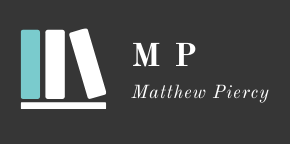“Uncle Matt? Hi! Can you talk?”
Teaching runs deep in my family. My mom and aunt were teachers, and when I followed in their footsteps, they couldn’t have been prouder. So, when my niece recently joined the ranks, it filled me with satisfaction. Just the other day, she shared a video of her classroom. Newer to the profession her excitement and uncertainty are palpable.
She followed up by calling me because she wanted to discuss something that had caught her off guard. During a back-to-school professional development session, the faculty delved into the topic of late work—a conversation that quickly heated up, with a strong focus on “policies.” This word, heavy with implications of compliance and authority, contrasted with my niece’s more collaborative approach, grounded in mutual respect and agreements with her students. After our call ended, I couldn’t shake the feeling that this was just one of many critical discussions that hopefully we are having before students arrive. Otherwise, it is likely to be overshadowed by more pressing issues which likely could be headed off with these early conversations and agreements. I share my niece’s idealism and agree that it is vital for teachers, administrators, and parents to unite and have a shared vision, working together for the best interests of students. Otherwise, an already complex world becomes even more difficult to navigate.
Open Dialogue, One Key to Student Well-Being
Writing this is not meant to be limiting. It really isn’t about my niece’s school or even late work policies and protocols. Rather, it is about the critical nature of sharing a unified vision and mission, understanding how important it is that we are in alignment and that we are as consistent as possible with expectations and follow through. This is what allows students a bit of space to relax. A space which is increasingly more and more needed in our world today. When we all are on the same page, our cohesion fosters student growth, reinforces core values, and helps students achieve beyond their school goals. Hopefully there is then a transfer into all areas of their lives, now and in the future.
A recent reputable education journal (I won’t say which one, nor will I share the title) featured a piece where a teacher professed how she hard and fast, simply would not allow AI this year. Such conversations on whether or not we allow students to use AI, largely should be mute. I say this, because simply we cannot (nor should we try) stop the use of AI. This is not pessimism speaking, but rather reality. And if we cannot stop it, there is even more impetus to educate on how to responsibly use it.
Consistency as a Compass
The more my niece talked, the more she seemed to be drilling deeper down in dismay about her school’s inconsistency and scattered beliefs about late work. I assured her that schools across the globe; public and independent are in a similar situation. When I asked her for some cold and hard data, I was grateful for her passing along a Google Sheet where teachers responded to the prompt, “Please add your late work policy for your classroom to this document by tomorrow morning.”
My niece was right. There was a wide degree of difference. I decided to use ChatGPT 4.0 to analyze the data and here is what was generated:
| Strict No Acceptance: Some policies state that late work will not be accepted at all unless prior arrangements have been made, emphasizing the importance of meeting deadlines without exceptions. Harsh Penalties: High Flexibility: |
In Eurasia Review Mir Hassan and Malik Kumail write, “ In an era of constant change, consistency remains the compass that guides students on their educational journey, laying the groundwork for a successful and fulfilling life.” These faculty responses depicted that there was little consistency. Maybe a bit of vision was lacking too. Some teachers possibly could see the forest through the trees whereas, others only saw the trees. This left me wondering, with such a mixed bag of visions and practices, how confusing might this be for students?
“Here I can. There I can’t. Tomorrow is okay but not in two days. 10% in his class and 50% in hers.”
I decided to speak to a colleague at another school and enquired about how their school treats late work. She shared, “Not all faculty could agree. However, since the decision was made, they all agree on the importance of being consistent.” Her school subtracts 5% per day after the due date, but not more than 35%.
Discourse Across Difference
Maybe one of the questions we should be considering is, “How might we provide greater clarity of expectations to and for students?” To do so, means we begin conversations like my niece was having. This undoubtedly requires listening but also flexibility. Something may have to give. And that something might just be us!
Global Online Academy’s (GOA) mission is to reimagine learning to enable students to thrive in a globally networked society. Recently, they announced several new courses will be offered. One is titled, “Discourse Across Difference.” How valuable might this be! For my niece’s school but for all of us? The course description reads, “Our increasingly interconnected, globally networked society presents us with complex social, political, and ethical dilemmas. This course equips students with strategies for engaging such issues through constructive dialogue focused on building understanding across differences…” How much better off might we be if we begin to have more of these conversations and eagerly begin to listen to learn?
I continue to reflect on my conversation with my niece. What is most clear, is that these conversations are more than what they appear. Ultimately, how we have them, can similarly occur in our classrooms. This is the learning environment our students need. As educators, we have a responsibility to cultivate clarity and consistency in our expectations. This begins with the discussions we have among ourselves. If we’re willing to listen and adapt, to see beyond our classrooms and consider the broader impact of our decisions, maybe we can create more supportive and cohesive experiences for our students.
The Need for Courage and Openness in a BANI World
In the post-Cold War era and the 1980s, the VUCA model (Volatility, Uncertainty, Complexity, Ambiguity) appeared. Few would disagree how the world seemingly become even more VUCA-filled. Yet, WU Executive Academy imparts how post-COVID-19, VUCA has evolved to BANI (Brittle, Anxious, Non-linear, Incomprehensible). Barbara Stöttinger, the dean of WU Executive Academy is not pessimistic. “BANI can be answered by the skills that we call ‘pioneers’ qualities…’ Successful leaders must face their own emotions and anxieties to prevail.” Courage and openness towards new things are two necessary traits.
Could we, as educators, take a page from my niece’s book? Being courageous and open enough to start these essential conversations. And then to reflect on them. Ones that call for less “my way” and more curiosity, flexibility, and collaboration. Our students’ best interests depend on it.











